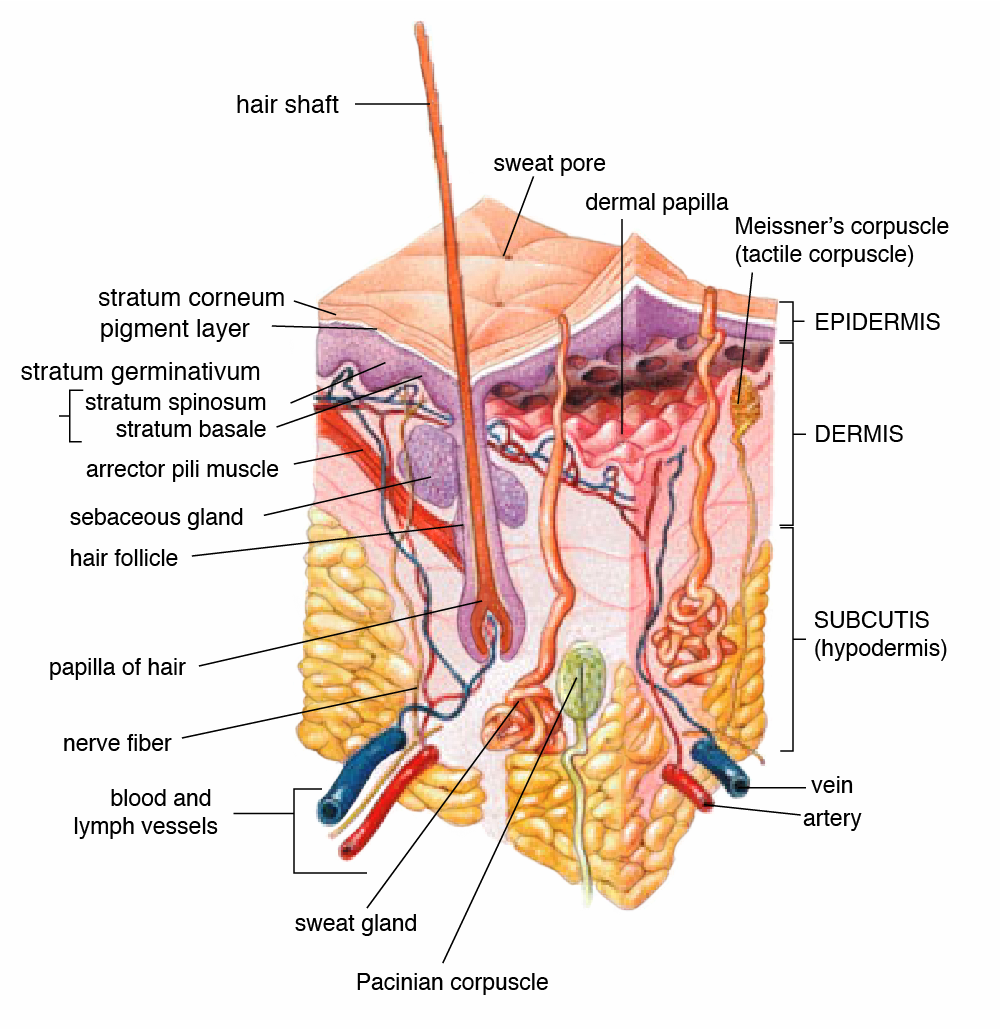Enzymes are basically proteins that speed up th rate of a chemical reaction. In other words, they make things happen that otherwise would be so slow as to be negligible. There are many enzymes in skin, these are a few.
1. Tyrosinase – this enzyme regulates the production of skin pigment (melanin). It is involved in the initial step of melanin (pigment) production by adding a hydroxyl group to the amino acid tyrosine (tyrosine hydroxylation). Some skin lightening products are formulated to inhibit this enzyme.
2. Matrix Metalloproteinases (MMP) – are responsible for breaking down proteins. They are found throughout the body but in skin their role is to breakdown and recycle the skin matrix of the dermis, specifically collagen and elastin. Typically, this is a bad thing because it weakns the matrix and leads to wrinkles; however, this is a good thing if the enzymes are breaking down damaged or worn out structural proteins, facilitating wound healing, or clearing a way for white blood cells to move into infected areas. Some skin care ingredients are designed to inhibit these enzymes.
3. prolyl-4-hydroxylase and lysyl-hydroxylase – These enzymes are responsible for making collagen, one of the structural proteins of the skin. These enzymes require vitamin C to do their job. In face deficiencies in vitamin C result in the disease scurvy due to impaired collagen. Some skin care ingredients are designed to help boost these enzymes; vitamin C for one.
4. Glutathione-s-transferase (GST) – Glutathione S-transferases (GSTs) are a family of Phase II detoxification enzymes that work in the skin and other organs to protect cells from attack by reactive electrophiles. They do this by binding reduced glutathione to the toxic agents. This is the first step in removing these agents. The role of GST in cancer is widely studied.
5. Kallikreins – these are part of a large family known as Serum Proteases that break peptide bonds in proteins. In the skin they help with desquamation. They do this by breaking down the proteins that connect one cell to another in the stratum corneum.



Wow, thanks for such an interesting and informative post, Cindy and especially for writing about these enzymes in a way that non-scientists can understand! 🙂
This is the stuff that really interests me!
So is Tyrosinase responsible for age marks?
Thank you, Cindy. I dig this kind of information! Always loving to learn!
LS yes. You'll find that ingredients that help with age spots inhibit a number of steps involved in pigment production; including tyrosinase.
This comment has been removed by the author.